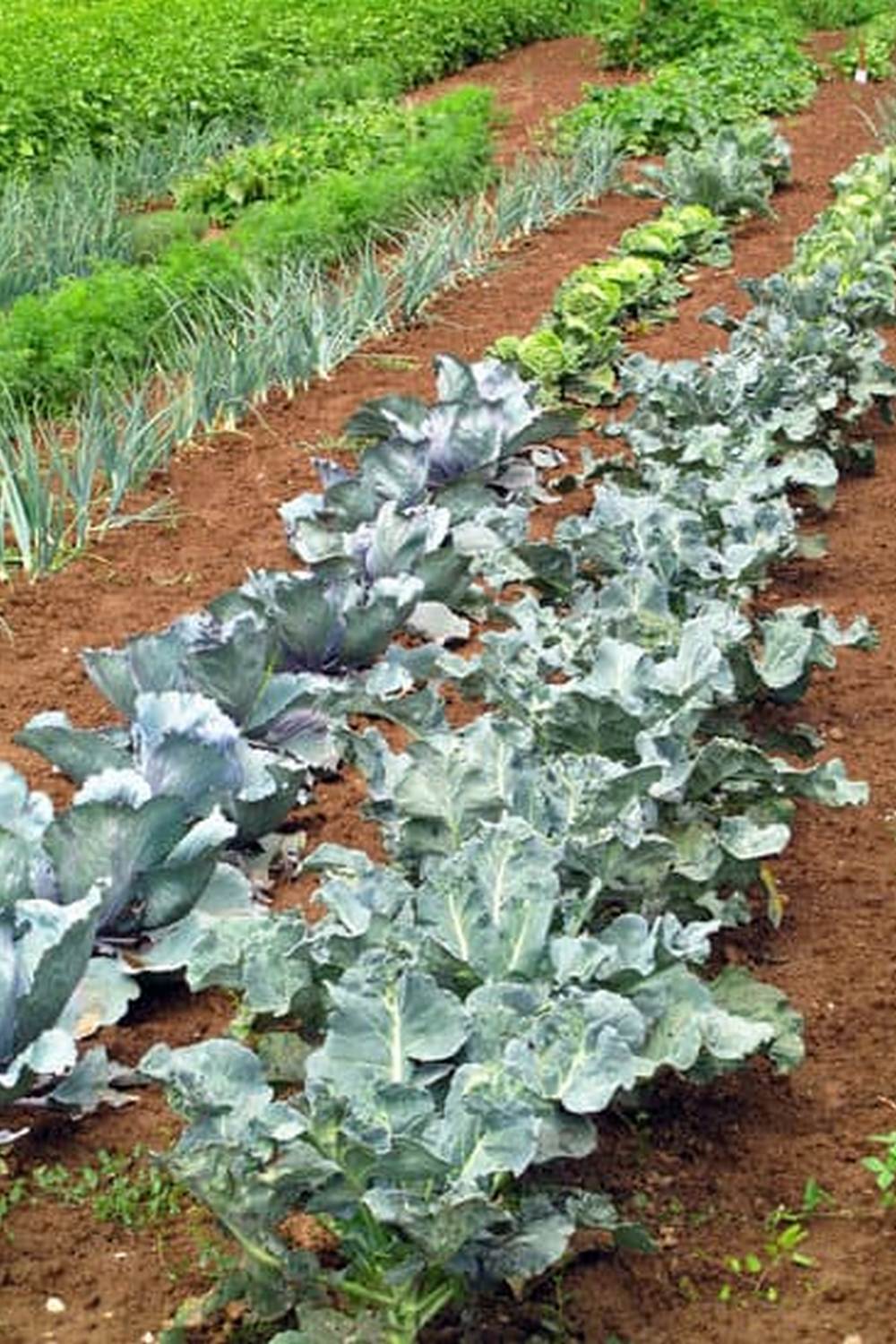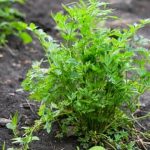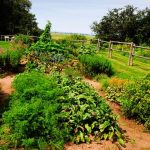Bringing the rich and diverse flavors of Indian cuisine to the US, Indian vegetable gardening has become increasingly popular among those looking to grow their own produce. With a focus on traditional Indian vegetables and gardening techniques, enthusiasts are embracing this cultural practice as a way to connect with their heritage while also enjoying the health benefits of homegrown produce.
The history of Indian vegetable gardening in the US is a story of resilience and adaptation. Over the years, immigrants from India have brought their knowledge of growing traditional vegetables to American soil, influencing local food culture and inspiring others to follow suit. This deep-rooted tradition has helped create a vibrant community of Indian vegetable gardeners across the country.
In this article, we will explore the history of Indian vegetable gardening and its influence in the US, popular Indian vegetables grown in the US and their health benefits, tips for setting up an Indian vegetable garden, as well as the challenges and success stories experienced by those who have taken on this rewarding endeavor.
Whether you are new to gardening or an experienced enthusiast, join us on a journey celebrating the diversity of vegetable gardening in the US with Indian flavors.
History of Indian Vegetable Gardening and Its Influence in the US
Indian Vegetable Gardening has a long and rich history that dates back thousands of years in India. The practice of growing vegetables has been an integral part of Indian culture and cuisine, with a wide variety of vegetables being cultivated for both culinary and medicinal purposes. When Indian immigrants brought their culinary traditions to the US, they also brought their knowledge and expertise in vegetable gardening.
Many popular Indian vegetables have found their way into American markets and kitchens, thanks to the influence of Indian vegetable gardening in the US. Vegetables such as bitter melon (karela), bottle gourd (lauki), okra (bhindi), and various types of beans are now commonly grown by Indian gardeners in the US. These vegetables not only add unique flavors to dishes but also offer numerous health benefits due to their high nutritional value.
The influence of Indian vegetable gardening in the US can also be seen in the increasing popularity of community gardens and urban farming initiatives. Many Indian immigrants have taken their passion for vegetable gardening to their local communities, sharing their knowledge and expertise with fellow gardeners. This has led to a greater diversity of vegetables being grown in the US, enriching the agricultural landscape and contributing to a more sustainable food system.
Popular Indian Vegetables Grown in the US and Their Health Benefits
When it comes to Indian vegetable gardening in the US, there are several popular vegetables that have found their way into the gardens of many Indian Americans. These vegetables not only add a touch of home to their gardens but also come with a plethora of health benefits. Here are some of the most popular Indian vegetables grown in the US and their corresponding health benefits:
- Bitter Gourd (Karela): Bitter gourd is known for its bitter taste and is commonly used in Indian cooking. It is rich in vitamins A, C, and K, as well as minerals like magnesium, iron, and potassium. Bitter gourd is also believed to have medicinal properties that can help lower blood sugar levels.
- Okra (Bhindi): Okra is a versatile vegetable that is packed with nutrients such as fiber, vitamin C, and antioxidants. It is often used in stews and curries in Indian cuisine and is known for its role in promoting digestive health.
- Spinach (Palak): Spinach is a staple in Indian cooking and is valued for its high iron content. It also contains vitamins A, C, and K, as well as folate and other important nutrients that contribute to overall health.
In addition to these popular Indian vegetables, others such as eggplant (brinjal), fenugreek (methi), and bottle gourd (lauki) are also commonly grown by Indian vegetable gardeners in the US. Each of these vegetables brings its own unique set of nutritional benefits to the table.
Overall, growing these traditional Indian vegetables not only allows for a taste of familiar flavors but also provides an opportunity to incorporate nutritious ingredients into everyday meals-making them an essential part of an Indian vegetable garden in the US.
Tips for Setting Up an Indian Vegetable Garden in the US
Setting up an Indian vegetable garden in the US can be a rewarding and fulfilling experience, allowing you to cultivate fresh, flavorful produce while staying connected to your cultural roots. Whether you are an experienced gardener or a beginner, here are some helpful tips to get started on your Indian vegetable gardening journey in the US.
Choose the Right Location
The first step in setting up your Indian vegetable garden is to select the right location. Most Indian vegetables thrive in sunny areas with well-drained soil. Look for a spot in your yard or balcony that receives at least 6-8 hours of sunlight each day. Consider factors such as proximity to water source, protection from strong winds, and accessibility for regular maintenance.
Select Suitable Vegetables
When planning your Indian vegetable garden, it’s essential to choose vegetables that are well-suited for the climate and growing conditions in your specific region of the US. Some popular Indian vegetables that can thrive in US gardens include bitter melon (karela), okra (bhindi), eggplant (brinjal), and various types of gourds (lauki, tinda). Research the best varieties for your area and consider starting with a few easy-to-grow options before expanding your crop selection.
Organic Practices and Soil Preparation
Many Indian vegetable gardeners prefer organic growing practices to ensure the purity and quality of their produce. Prioritize soil richness and fertility by incorporating compost, aged manure, or other organic matter into the soil. Additionally, consider using natural pest control methods and avoiding chemical fertilizers or pesticides whenever possible. Before planting, test your soil’s pH levels and make necessary amendments to create an optimal growing environment for your Indian vegetables.
By following these tips and dedicating time and effort to learning about specific requirements for different Indian vegetables, you can create a successful and vibrant garden that reflects the rich culinary heritage of India while thriving in the diverse landscapes of the US.
Challenges of Growing Indian Vegetables in a Different Climate
Growing Indian vegetables in the US can be a rewarding experience, but it also comes with its challenges, particularly when it comes to adjusting to a different climate. The climate in India is diverse and varies greatly from region to region, and as such, many traditional Indian vegetables are accustomed to specific weather conditions that might not be readily available in the US.
One of the main challenges of growing Indian vegetables in the US is ensuring that they receive the right amount of sunlight, water, and temperature. For example, vegetables like okra and eggplant thrive in warm temperatures and require plenty of sunlight.
In contrast, spinach and cilantro prefer cooler temperatures. This means that gardeners may need to make adjustments such as using mulch or row covers to regulate soil temperature or planting at certain times of the year to mimic their natural growing conditions.
Another challenge is finding suitable soil for Indian vegetable gardening in the US. Different regions within the US have varying soil compositions, and it may not always match the rich loamy soil found in parts of India. Many traditional Indian vegetables are used to nutrient-rich soil, so gardeners may need to enrich their soil with compost or organic matter to ensure a successful harvest.
Finally, pest and disease management can present challenges when growing Indian vegetables in the US. Pests and diseases affecting these crops may differ from those commonly found in India due to differences in climate and environmental factors.
| Challenges | Strategies |
|---|---|
| Adapting to different climate | Using mulch or row covers; adjusting planting times |
| Finding suitable soil | Enriching soil with compost or organic matter |
| Pest and disease management | Researching local pests and diseases affecting crops; implementing natural pest control methods |
Success Stories of Indian Vegetable Gardening in the US
Indian vegetable gardening in the US has been gaining popularity in recent years, as more and more Indian immigrants and enthusiasts are cultivating their favorite vegetables in their own backyard. These success stories not only demonstrate the determination and skill of Indian gardeners, but also show how diverse and delicious vegetables from the Indian subcontinent can be grown in a different climate.
Growing Okra in Brooklyn
One success story comes from an Indian immigrant family living in Brooklyn, New York. Despite the cooler climate of the Northeast, they have successfully grown okra, a staple vegetable in Indian cuisine. They implemented creative growing techniques such as using raised beds, hoop houses, and row covers to extend the growing season and protect the plants from cool temperatures. Through their efforts, they have been able to enjoy homegrown okra throughout the summer months.
Harvesting Bitter Melon in California
In California, where the climate is more conducive to warm-season crops, another success story involves a couple who have been harvesting bitter melon in their backyard for several years. Bitter melon is a popular vegetable used in Indian cooking for its unique flavor and health benefits. The couple has established a thriving garden by providing ample sunlight, consistent watering, and rich soil for their bitter melon plants.
Cultivating Spinach and Fenugreek in Texas
Lastly, in Texas, an avid gardener has found success in cultivating spinach and fenugreek – two essential greens used widely in Indian cuisine. By carefully selecting varieties that are heat-tolerant and by providing shade during scorching summer days, this gardener has managed to create a flourishing garden full of vibrant green leaves that are enjoyed by family and friends.
These success stories highlight the creativity, perseverance, and dedication of Indian vegetable gardeners across different regions of the US. Their achievements serve as inspiration for aspiring gardeners looking to cultivate Indian vegetables in their own gardens.
Community Support and Resources for Indian Vegetable Gardeners in the US
When it comes to Indian vegetable gardening in the US, there is a growing community of enthusiasts who are eager to share their knowledge and experience with others. This has led to the formation of support groups and online resources that provide valuable information and assistance for those interested in cultivating Indian vegetables in their own gardens.
One example of such community support is the Indian Vegetable Gardening Club, which has chapters in various states across the country. Members of this club organize regular meetups, workshops, and seed exchanges, providing a platform for gardeners to connect, learn from each other, and access rare seeds that are essential for growing authentic Indian produce.
In addition to physical gatherings, the internet has also become a valuable resource for Indian vegetable gardeners in the US. There are several online forums and social media groups dedicated to this niche, where individuals can seek advice, troubleshoot problems, and share their successes with a like-minded community.
| Indian Vegetable Gardening Community Support | Online Resources for Indian Vegetable Gardeners |
|---|---|
| Indian Vegetable Gardening Club meetups, workshops, and seed exchanges | Online forums dedicated to Indian vegetable gardening |
| State-specific gardening clubs focusing on Indian produce cultivation | Social media groups for sharing tips and success stories |
These resources have proven invaluable for many gardeners who are trying to navigate the specific requirements of growing Indian vegetables in a different climate. They provide not only practical advice but also emotional support and encouragement as individuals strive to replicate tastes from home or explore new flavors from diverse regions of India.
Conclusion
In conclusion, Indian vegetable gardening in the US not only brings the flavors of India to American households but also celebrates the diversity of vegetable gardening in the US. The rich history and influence of Indian vegetable gardening have made a significant impact on the agricultural landscape in the country. With popular Indian vegetables like okra, bitter gourd, and bottle gourd being grown in home gardens, more people are enjoying fresh and healthy produce with unique flavors.
Setting up an Indian vegetable garden in the US may pose some challenges, especially with different climate conditions. However, with proper research and tips for adapting to the local environment, many gardeners have found success in growing their favorite Indian vegetables. And as seen in success stories, the rewards of harvesting home-grown Indian vegetables are well worth the efforts put into cultivating them.
Furthermore, community support and resources for Indian vegetable gardeners in the US play a vital role in promoting this aspect of agriculture. With diverse communities coming together to share knowledge, seeds, and techniques for successful cultivation, it has created a supportive network for those interested in Indian vegetable gardening. Overall, embracing the diversity of vegetable gardening with Indian flavors adds a unique dimension to the culinary landscape of the US while promoting health and wellness through fresh produce.
Frequently Asked Questions
Can You Grow Your Own Vegetables in America?
Yes, it is absolutely possible to grow your own vegetables in America. The United States has a variety of climates and soil types, allowing for the cultivation of a wide range of vegetables throughout the country.
Where Is the Best Place to Grow Vegetables in the US?
The best place to grow vegetables in the US depends on the specific needs of each type of vegetable. Generally, regions with mild winters and plenty of sunshine, such as California or parts of the Southeast, are great for growing a wide variety of vegetables.
What Is the Most Popular Crop in US Home Vegetable Gardens?
The most popular crop in US home vegetable gardens is tomatoes. They are versatile, relatively easy to grow, and can be cultivated in various climates. Tomatoes also offer an abundance of varieties, making them a favorite choice for many home gardeners across the country.

If you’re looking to get into vegetable gardening, or are just looking for some tips on how to make your current garden better, then you’ve come to the right place! My name is Ethel and I have been gardening for years. In this blog, I’m going to share with you some of my best tips on how to create a successful vegetable garden.





